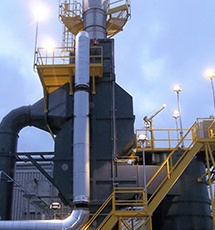Spring has sprung; the sun is shining longer, flowers and trees are blooming, and the snow is gone (well, in most parts anyway). Plans are being made for summer vacations, graduations, weddings, and oxidizer maintenance.
Your company has invested a lot of money in its air pollution control system. Your team was trained on how to perform the recommended maintenance as called out in the Operation and Maintenance manual when the system was commissioned. As the years have gone by, you may have had some turnover, but that's OK. The system runs fine. Or does it? How do you know?
Being Proactive Saves Time
Training new employees and/or having refresher training for existing employees is crucial to operating your Pollution Control Equipment (PCE) at its peak performance. Like a car, there are signs when something is starting to fail. Just as you might notice some leaks under a car or noises from its engine compartment, you might also see some warning signs from your oxidizer. Catching minor issues early on PREVENTS untimely and costly repairs. Are your employees trained to notice the signs? Are they able to perform basic service to your Air Pollution Control Equipment?
Being Proactive Saves Money
Is your oxidizer running as efficiently as it can? With a car, you can determine what your efficiency is by calculating your miles per gallon of gas. If your MPG is lower than expected, you can look into what is causing the inefficiency. Is the tire pressure low? Do you need to use a different type of gas? Does the car need a tune-up?
You can do similar comparisons with your Air Pollution Control Equipment. How much gas are you using per month? Are you comparing gas usage month to month? Are you pulling the correct amount of SCFM (standard cubic feet per minute) from your process? Are the air filters dirty? Is your burner gas to air ratio within design? If you need help determining whether any of these issues need to be addressed, we can offer you assistance with ensuring your PCE is operating as it was meant to be.
Being Proactive Keeps Your Equipment Running
What is an acceptable amount of down time due to a failed component? By answering this question, you will be able to determine what parts you need to have on hand. Another way to ensure uptime reliability is to change out parts yearly. Yes, this can be a little more costly than waiting for something to break and then changing it. But think of it this way: by changing out parts before they wear out, you are buying an insurance policy that they will not break down for another year. Of course, parts should last longer than a year, but by changing them, you can increase the odds that a particular part will not break down over the next year. If you’re interested in purchasing and installing new parts, please contact us to review a solution that works best for your company.
Request Service Online and Save Money:
CPI would like to make sure that if the unexpected happens to your oxidizer, you can recover quickly. Catalytic Products International (CPI) provides service support and spare parts for a wide range of air pollution control equipment, including regenerative thermal oxidizers (RTOs), thermal oxidizers, catalytic oxidizers, and heat exchangers. Our company offers support for not only CPI branded equipment, but also oxidizers from all manufacturers.
For further reading, here are some related case studies and blogs about oxidizer maintenance:









